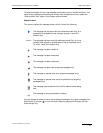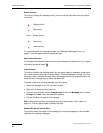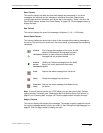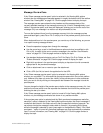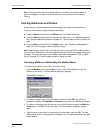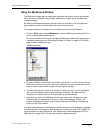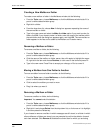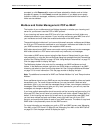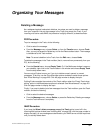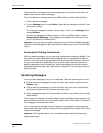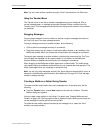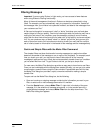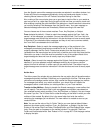
Mailbox and Folder Management: POP vs. IMAP Eudora User Manual
103
QUALCOMM Incorporated
prompted, or click Remove all to remove all items selected for deletion and no further
prompts will appear. Or click Cancel to cancel the deletion. If you delete a non-empty
mailbox or folder, all messages, mailboxes, and folders contained within the mailbox or
folder are also deleted.
Mailbox and Folder Management: POP vs. IMAP
The location of your mailboxes and mail folders depends on whether your incoming mail
server for your account uses the POP or IMAP protocol.
If your incoming mail server uses POP, then all of your mailboxes and mail folders are
created and stored on your computer. If your incoming mail server uses IMAP, then all of
your mailboxes and mail folders are created and stored on the IMAP server.
The parallel situation holds true if you have multiple email accounts: mailboxes and folders
for all of your POP accounts are stored on your computer; mailboxes and folders for all of
your IMAP accounts are stored on the respective IMAP servers.
Mail folders stored on an IMAP server can contain not only mailboxes, but also messages.
Mail folders stored on a POP server can contain only mailboxes, not messages.
You create an IMAP server account using the New Account Setup wizard for your domi-
nant personality, or using the Account Settings dialog box accessed from the Personalities
window. See “Getting Started” on page 197 and “Using Multiple Personalities” on page 75.
Click the page number to display the topic.
The Mailboxes window is the main tool for managing your IMAP mailboxes and mail
folders. In the Mailboxes window, right-click one of the folders or mailboxes in an IMAP
hierarchy and select an item from the drop-down list. See “Using the Mailboxes Window”
on page 101 for more information. Click the page number to display the topic.
Note. The additional commands for IMAP are “Refresh Mailbox List” and “Resynchronize
Mailbox.”
Some mailboxes stored on your IMAP server may have been created by others and made
accessible to you. For some of these mailboxes, you may have both “read and write”
permission; that is, you can read the messages stored in them, can change or delete the
messages. Other mailboxes may give you only “read” permission; you can only read the
messages, not change or delete them.
If you have multiple personalities (email accounts) and the incoming mail servers for all of
them use POP, then you will have only one top-level mail folder, named “Eudora Mail” by
default. If the incoming mail server for at least one of your personalities uses IMAP, then
you can have multiple top-level mail folders; one to hold mail from all of your POP
account, and one top-level folder for each of your IMAP accounts. The name of a top-level
IMAP folder is the personality name for that IMAP account.
For more information on managing your mail on POP and IMAP servers, see “Managing
Your Mail on the POP Server” on page 55 and “Managing Your Mail on the IMAP Server”
on page 59. Click the page number to display the topic.



